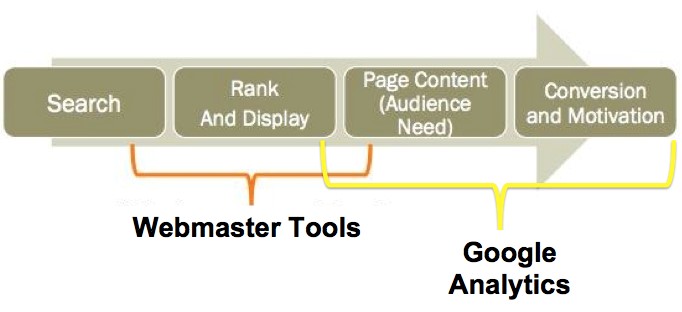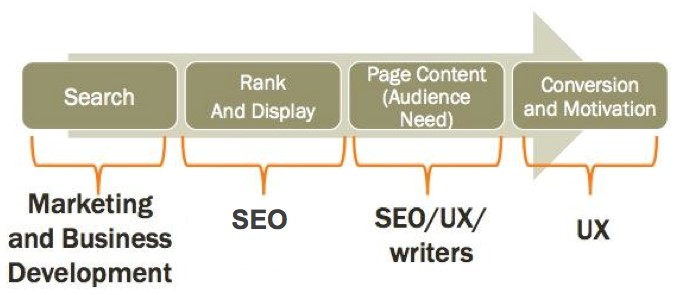How Google Search Console helps with a) search and b) persona
Google Search Console (GSC) helps with search and persona in the following ways:
1) Search (SEO Optimization and Visibility)
Google Search Console is primarily designed to help website owners optimize their presence in Google Search. It provides tools and insights to enhance discoverability and indexing:
How it helps: By monitoring and improving these aspects, you can boost your site’s search rankings and organic traffic.
2) Persona (Understanding Audience Behavior and Intent)
Google Search Console indirectly helps in persona development by providing data on how users interact with your site through search:
How it helps: By analyzing user search behavior, you can create more targeted content, optimize for the right audience, and refine marketing strategies.
1) Search (SEO Optimization and Visibility)
Google Search Console is primarily designed to help website owners optimize their presence in Google Search. It provides tools and insights to enhance discoverability and indexing:
- Performance Report: Shows clicks, impressions, CTR (Click-through Rate), and average position for keywords. This helps you analyze which queries drive traffic to your site.
- Index Coverage: Identifies which pages are indexed or have indexing issues.
- Mobile Usability: Checks if pages are mobile-friendly and alerts on mobile experience issues.
- Page Experience & Core Web Vitals: Reports on site speed, responsiveness, and visual stability (LCP, FID, CLS).
- Search Enhancements: Includes structured data insights (e.g., rich results, breadcrumbs, FAQs).
- Manual Actions & Security Issues: Alerts for penalties or security risks affecting search performance.
- Sitemaps & URL Inspection: Ensures Google properly crawls your latest content.
How it helps: By monitoring and improving these aspects, you can boost your site’s search rankings and organic traffic.
2) Persona (Understanding Audience Behavior and Intent)
Google Search Console indirectly helps in persona development by providing data on how users interact with your site through search:
- Query Analysis: Identifies the keywords users search before landing on your site. This helps in understanding user intent (informational, navigational, transactional).
- Location & Device Data: Shows where your audience is from and what devices they use, shaping persona demographics.
- Page Performance: Reveals which pages attract the most clicks and engagement, highlighting what content resonates with your audience.
- Click-Through Rate (CTR) Analysis: A low CTR might indicate misalignment between search intent and page content, helping refine messaging and content strategy.
- User Flow & Search Behavior: Observing patterns in queries and page engagement helps define persona preferences and challenges.
How it helps: By analyzing user search behavior, you can create more targeted content, optimize for the right audience, and refine marketing strategies.
Flowchart which illustrates the relationship between 1) Google Search Console and 2) Google Analytics

Below is an explanation of each of the four elements in the flow:
1) Search (Webmaster Tools / Google Search Console)
- This phase refers to how users find your website through Google Search.
- Google Search Console (formerly called Webmaster Tools) helps website owners monitor indexing, crawling, and search rankings.
-
It provides data on:
- Keywords that bring traffic
- Click-through rates (CTR)
- Indexed vs. non-indexed pages
- Mobile usability and site health
- Impact: Helps optimize search presence, ensure discoverability, and troubleshoot SEO issues.
2) Rank and Display (Webmaster Tools / Google Search Console)
- This refers to how Google ranks and presents your website in search results.
-
Google Search Console provides:
- Search Performance Reports (Impressions, Clicks, CTR)
- Structured Data (Rich Snippets, Schema Markup)
- Manual Actions (Penalties)
- Core Web Vitals (Speed, UX signals)
- Impact: Helps understand why a page ranks the way it does and how to improve visibility in search results.
3) Page Content (Audience Need) (Google Analytics)
- This phase focuses on how users engage with your content once they land on your website.
-
Google Analytics provides:
- User behavior (Bounce rate, Time on Page)
- Popular pages (Which content performs best)
- Demographics and Interests (Who your visitors are)
- User journey tracking (How users navigate through your site)
- Impact: Helps in refining content strategy to match audience needs and intent.
4) Conversion and Motivation (Google Analytics)
- This is about turning visitors into customers or engaged users.
-
Google Analytics provides:
- Conversion tracking (Goals, Sales, Form Submissions)
- Funnels and Drop-off Analysis (Where users exit)
- A/B Testing and Optimization
- Impact: Helps in optimizing calls to action (CTAs), landing pages, and overall conversion rates.
Key Takeaways from the Image
- Webmaster Tools (Google Search Console) covers the search and ranking part of the process (technical SEO).
- Google Analytics covers user behavior and conversions after visitors land on your website.
- Combining both tools bridges the gap between search visibility and audience engagement/conversions.
You might be asking, where does "Google Search Console" fit in with the search and persona workflow?
Google Search Console provides information that is pertinent to optimizing the
Google Search Console provides information that is pertinent to optimizing the
- Crawl
- indexing and
- Search Results processing

3. Page Content - UX and writers 4. Conversion and Motivation - Front end designers
Effective Search Acquisition Strategy
To effectively use organic search as an acquisition channel, you should ensure that your web site:
- Can be discovered by search engines so the pages can be added to the list the crawler uses to traverse the web.
- Uses website architecture that does not introduce obstacles that make the pages inaccessible to the crawlers.
- Presents all content in a way that is extractable for search engines to index.
- Is relevant and useful to searchers